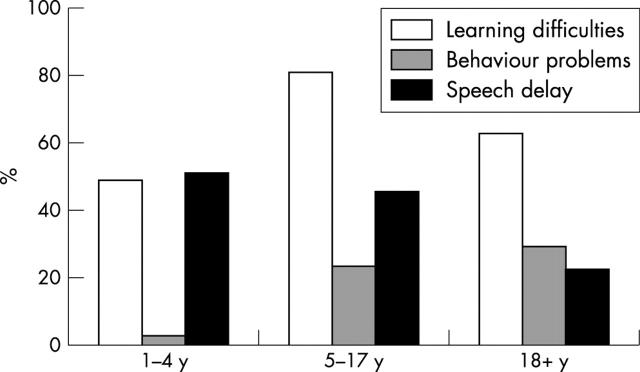Abstract
Methods: A retrospective review of case notes from patients with a chromosome 22q11 microdeletion identified by cytogenetics laboratories of the south and west of Britain over a four year period.
Results: A total of 210 cases were identified. Age at diagnosis was 0–1 years (34%), 1–4 (17%), 5–17 (35%), and 18 years or more (13%). School age children were less likely to be investigated than infants: echocardiography in school age 86% v in infancy 97%, serum calcium 66% v 89%, renal ultrasound scan 38% v 42%, lymphocyte count 26% v 68%, parental karyotype 78% v 88%. The yield of investigations remained high throughout all age groups with 42% of school age children shown to have hypocalcaemia and 25% abnormal findings on renal ultrasound.
Conclusions: 22q11 microdeletion is a multisystem disorder requiring a set of core investigations at diagnosis. We recommend an echocardiogram, renal ultrasound scan, lymphocyte count and function, serum calcium, and parental karyotype as a minimum. Genetic counselling and community paediatric input is helpful for most families.
Full Text
The Full Text of this article is available as a PDF (77.6 KB).
Figure 1.
Incidence of learning difficulties, speech delay, and behaviour problems over the different diagnostic age groups.



